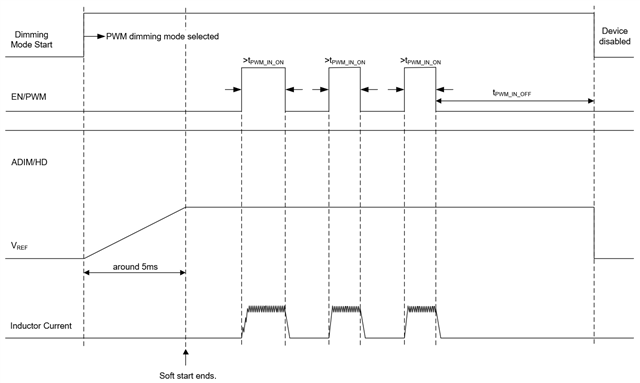I want to strobe the LED current and output nearly square-wave-shape current output. I do not want the soft start to influence my output current, so I need to know when the soft starts ends and then I will input my EN/PWM signal. Is there any illustration about the transition of TPS923655 / TPS923654 / TPS923653 / TPS923652 from shutdown into PWM dimming mode?
-
Ask a related question
What is a related question?A related question is a question created from another question. When the related question is created, it will be automatically linked to the original question.



